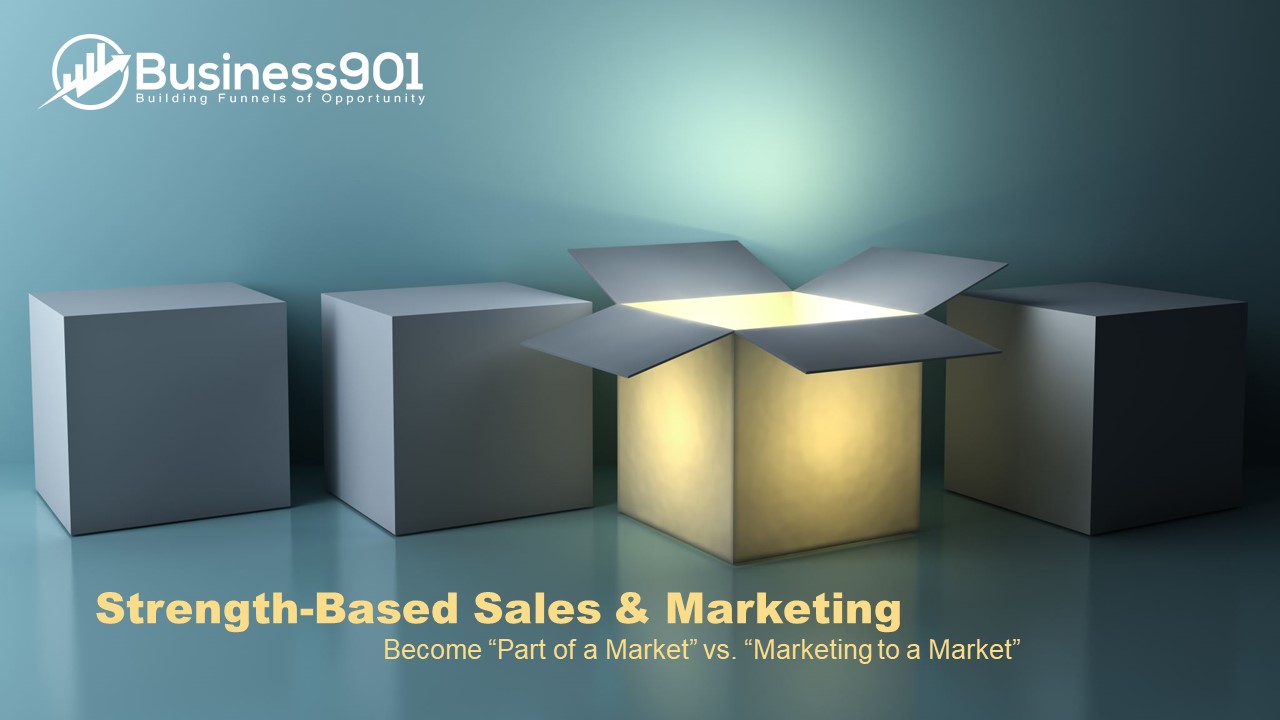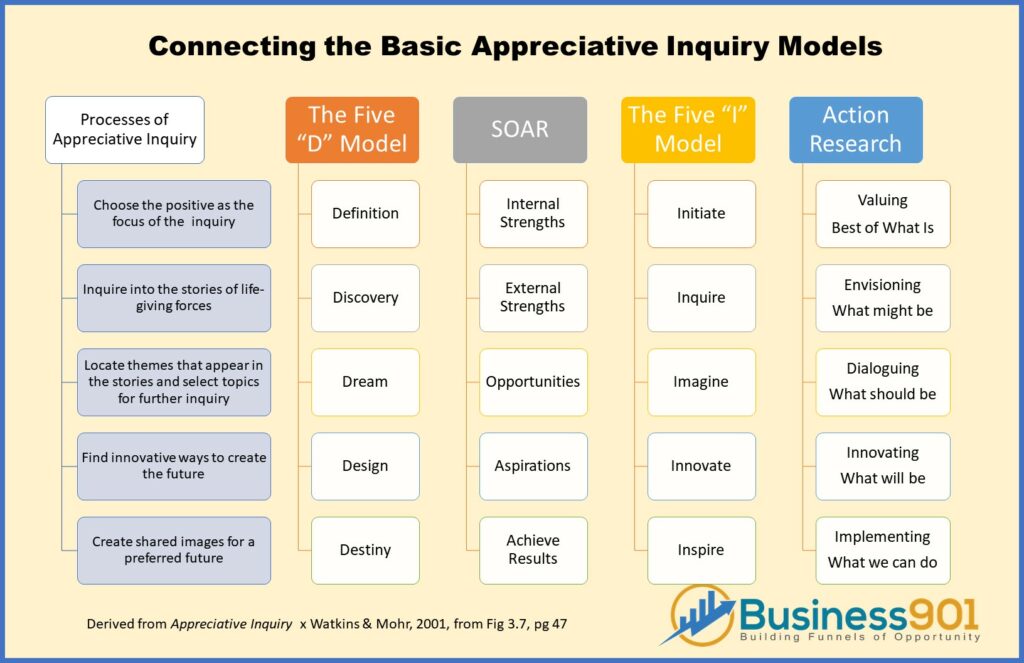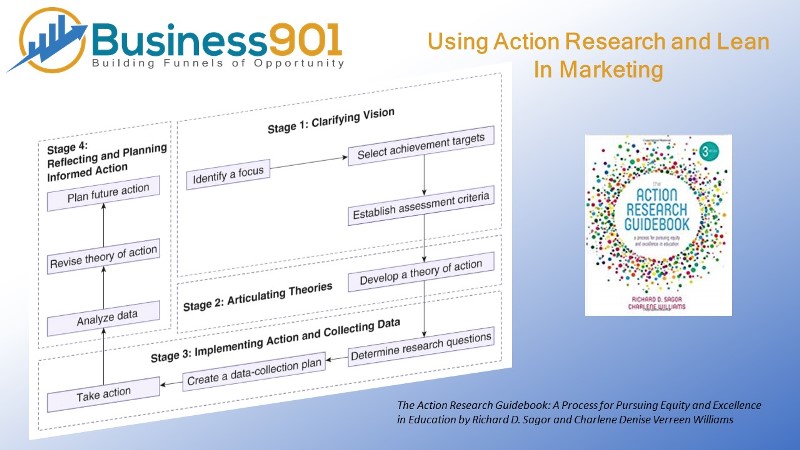Strength-Based Approaches and Appreciative Inquiry are a shift from looking at problems and deficiencies and instead focusing on strengths and successes. I always use the example that is about obtaining the flow of what and how versus the drilling down of why. In sales and marketing when you analyze your wins instead of your losses it makes you 10X more likely to understand the events that trigger decision makers to become motivated about buying your product or service. These approaches are a tool for change, and they will strengthen relationships throughout your business and community.
Most people struggle to obtain this mindset without training. We have just been conditioned otherwise. If interested in learning more about this approach and the training we offer, please contact us through the form at the bottom of the page.

Marketing is not a deterministic process; you do this and this happens, cause and effect. Anyone can come up with a great marketing strategy and in the same vein anyone can come up with a marketing idea. As long as you build plans, websites and develop strategies in isolation of customers your chance of success is minimized.
It is not about the tools you use; it is about the conversations you create.
We need to act on what we know and constantly have a conversation about the near-term future through reviewing data and summarizing. This enables us to look for trends through the intelligence we gather. Frequency and rhythm will beat glitz and quality. What is important is using information in context, creating greater understanding and through this greater connectivity. Connectivity comes from our expressed value through rituals, the way we act, and stories. This is what carries over to the outside world. Our thoughts, behaviors, and feelings with our insiders should be aligned with ours. And that is the most honest and intelligent way to develop an effective brand.
Appreciative Inquiry (AI) and Action Research (AR) has become more prevalent in my marketing approach and toolbox. I have a higher-order of thinking as I go left to right in the diagram, but the thought process remains basically the same. A not so perfect way of saying it is that there is a Macro to Mini order to the columns, for example:
- The practice of SOAR in lieu of SWOT is instrumental in bringing on clients and providing the initial framework for discussion and visioning.
- The Five “D” Model for conceptualizing, more of a broader stroke over a product/service line or a value stream.
- The Five “I” Model is more campaign or event-driven.
- Action Research is a natural progression for me as we move towards external research.
I have found marketing processes are often disjointed, especially from an AI perspective, and having the different AI models have provided me the opportunity to plug their messages and actions into these different blocks where they best fit. Adapted from Appreciative Inquiry 2001 1st edition by Watkins & Mohr 2nd edition: https://amzn.to/2ITUg9b

This is the initial sequence of steps we use to create a Strategic Strength-Based Marketing Outline. It ensures we carefully think through what we want and can create and whom we have to involve within our sphere of influence to guarantee success. Connecting people through a positive mindset approach or an Appreciative Inquiry view always focusing on those positive steps.
Start with the 5 Ds of Appreciative Inquiry
Define
What is the focus of inquiry? – What will define our purpose, content, and what needs to be achieved?
Discover
Appreciating the best of ‘what is’ – What are we presently doing and how does our customer feel about it? What makes up our strengths and periods of excellence?
Dream
Imagining ‘what could be’ – Using past achievements and successes identify new possibilities and envision a preferred future.
Design
Determining ‘what should be’ – Bring together the stories from discovery with the imagination and creativity from dream. Design “provocative” propositions
Destiny
Creating ‘what will be’ – Identify how the design is delivered, and how it’s embedded into groups, communities, and organizations.
SWOT is the age-old concept of defining our Strength, Weaknesses, Opportunities, and Threats. SOAR is a strength-based approach. SOAR allows you to lead with the positive side of the issues and many times you will often discover more. The SOAR framework is outlined by Strengths, Opportunities, Aspirations, Results. SOAR was developed by Jacqueline M. Stavros and explained in the book; The Thin Book of SOAR; Building Strengths-Based Strategy.
SOAR Framework
Initiate
With what we can use
Inquiring into our Strengths
What can we build on?
Imagining the Opportunities
What are our customers asking for?
Innovating to reach Aspirations
What do we care deeply about?
Inspiring to implement to achieve Results
How do we know we are succeeding?
I use SOAR in conjunction with the 5 I’s with marketing campaigns and projects. We start by doing something small which will be more effective than trying to take big leaps which can be a real stopper. Simply stated, small iterations are more effective than taking large leaps. If you want momentum, you have to be able to move in a decisive manner and move with meaning. There are 3 basic obstacles that prevent people from implementation:
1. Information Overload – trying to learn too much about too many things
2. Negative Filtering – engaging in negative thought processes that prevent opening our minds to opportunities
3. Lack of Follow-up – not having a plan to put the new knowledge into action.
Appreciative Inquiry (Action) Research is an experiential learning approach to positive change. It is a necessary sales and marketing step for exploration. Research should be an iterative process that takes shape as knowledge emerges. The premise here is that you learn, you do, you reflect, you learn how to do better, you do it better, you learn from that, do it better still, and so on. You work through a series of cycles that converge towards better situation understanding and improved action. The goal is to refine methods, data, interpretation continuously and to understand deeper the learning developed in the cycles. It is our way of testing and accelerating product/service entry.
One of the leaders of the idea of Action Research is Richard D. Sagor who has helped form much of my initial understanding of the subject matter.
Sagor in his book, The Action Research Guidebook explains:
Action research is a small idea. It involves examining data on one’s work to help improve one’s performance. Although there isn’t a consensus on a single set of processes or steps that constitute action research, as presented here, action research is a straightforward four-stage process.
4 Stages of The Action Research Process
Clarifying Vision and Targets
What do you want to accomplish?
Articulating Theory
What approach do I believe has the greatest potential for helping us to realize our goal(s)?
Implementing Action and Collecting Data
What data/information will we need to collect if we want to understand the effectiveness of our theory of action?
Reflecting on Data and Planning Informed Action
Based on this data/information, how should we adjust our future actions?
Sagor says the steps are not as important as the idea of the practice of them or the action that takes place. Traditional and Agile Marketing will display some of these characteristics, but it is the combination of these actions with Appreciative Inquiry through research that distinguishes a Strength-Based Marketing Process.

Learn how to become “Part of a Market” vs. “Marketing to a Market”
If you would like to stay with yesterday’s thinking, there are plenty of proficient marketing people you can hire. If you would like to be challenged to think differently, let’s talk.

